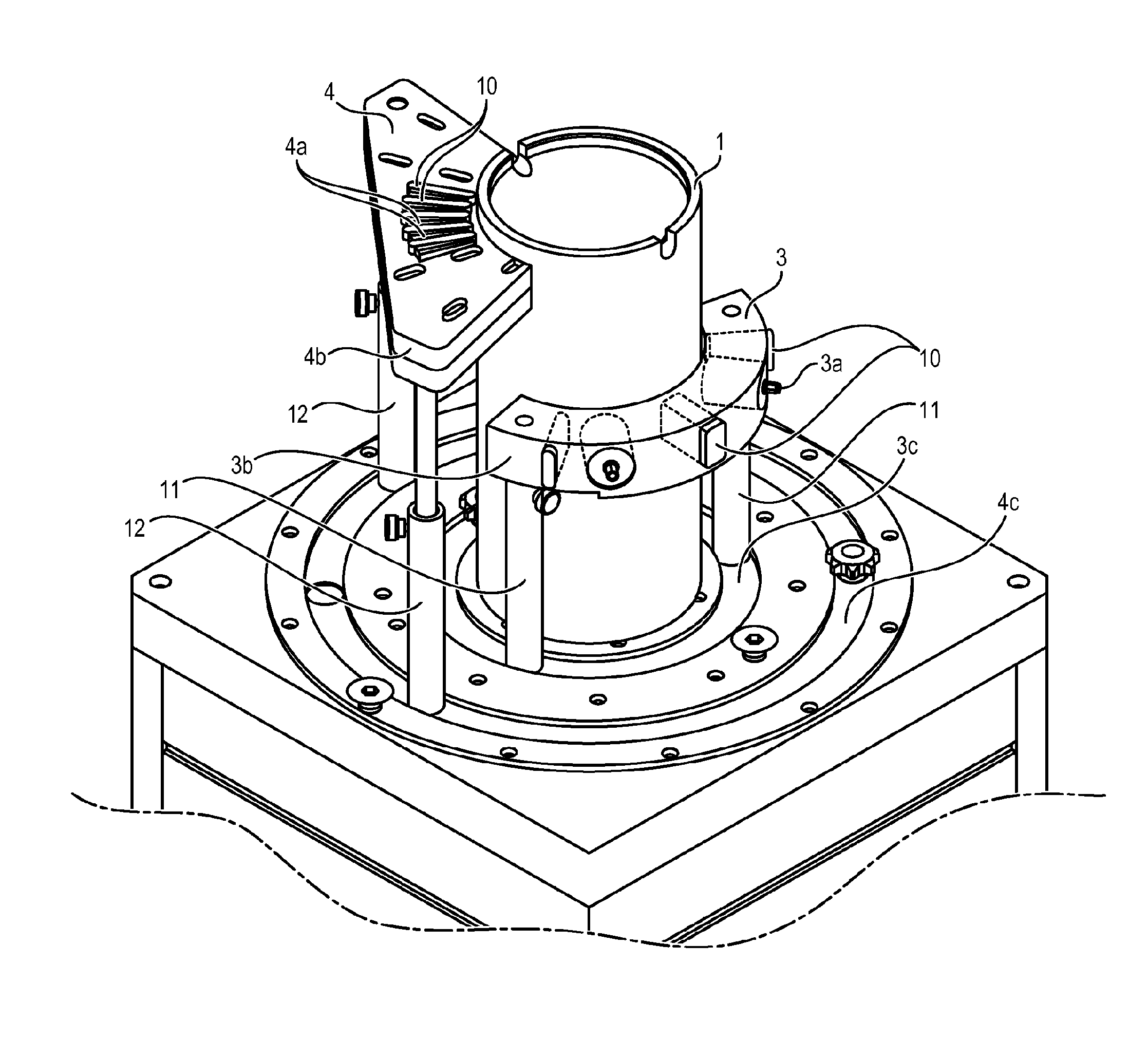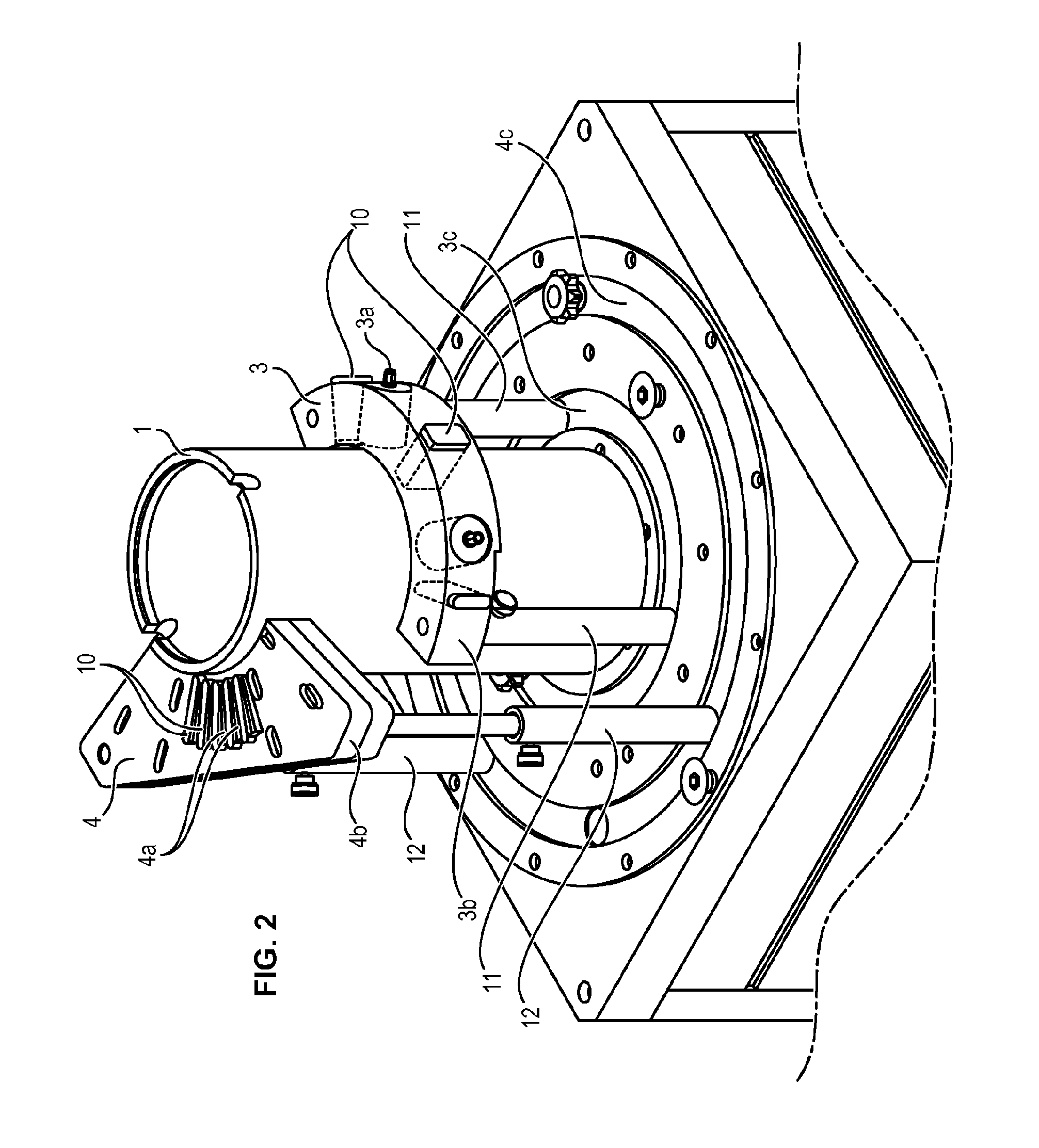Medical imaging system having microwave emission/reception
a medical imaging and microwave technology, applied in the field of medical imaging systems with microwave antennas, can solve the problems of system however raising a certain number of difficulties, liquid generally having many dielectric losses at preferred working frequencies, and posing difficulties in sealing, insulation of transmitter/sensor probes,
- Summary
- Abstract
- Description
- Claims
- Application Information
AI Technical Summary
Benefits of technology
Problems solved by technology
Method used
Image
Examples
Embodiment Construction
[0028]In the embodiment of FIG. 1, the device comprises a shell made of dielectric material 1 intended to receive the breast of the patient, a container 2 in which is placed this shell 1, at least one array 3 of transmission probes 3a, at least one array 4 of reception probes 4a, and a set of metallic casings 5 and electromagnetic absorbents 6 made of foam which enclose the container 2 and the arrays 3 and 4.
[0029]The shell 1 has an external form complementary to the internal form, cylindrical in this case, of the container 2 in which it is kept. Inside it has a hollow impression intended to receive the breast of a patient.
[0030]This shell 1 is detachable relative to the container 2. The device is connected to a set of shells 1. The external forms of the shells of the set of shells are identical. But the impressions are different and allow adaptation to the size of the breasts to be imaged.
[0031]The array 3 of transmission antennas 3a illuminates the medium under observation. In thi...
PUM
 Login to View More
Login to View More Abstract
Description
Claims
Application Information
 Login to View More
Login to View More - R&D
- Intellectual Property
- Life Sciences
- Materials
- Tech Scout
- Unparalleled Data Quality
- Higher Quality Content
- 60% Fewer Hallucinations
Browse by: Latest US Patents, China's latest patents, Technical Efficacy Thesaurus, Application Domain, Technology Topic, Popular Technical Reports.
© 2025 PatSnap. All rights reserved.Legal|Privacy policy|Modern Slavery Act Transparency Statement|Sitemap|About US| Contact US: help@patsnap.com



